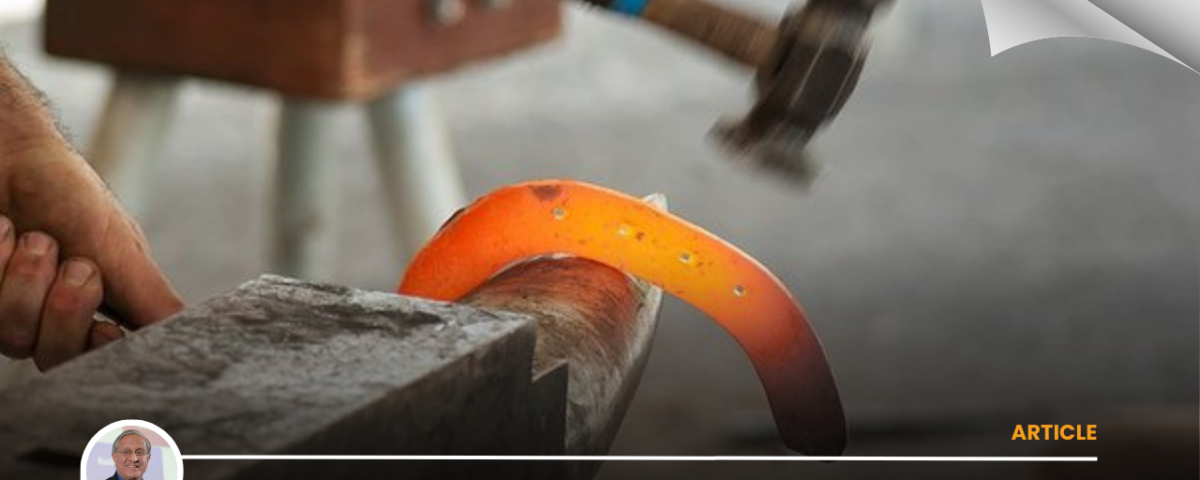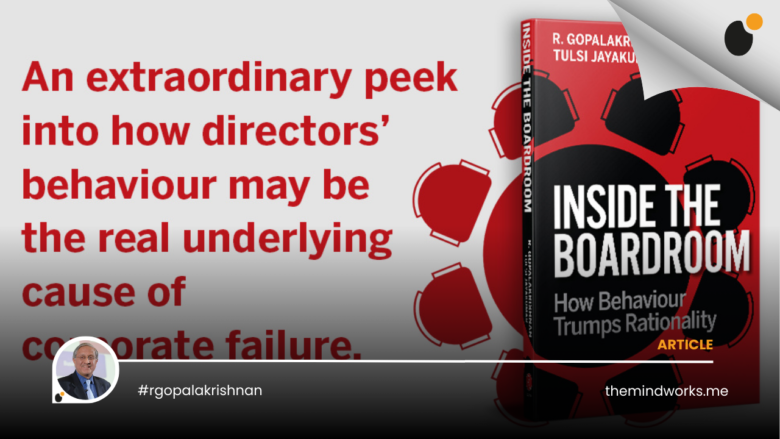Crucibles in leadership development
R Gopalakrishnan*
*(The writer is an author and business commentator. His fifty-year professional career was spent in HUL and Tata).
There is great value in moving across functions, geography, work relationships, and domains—what I term as talent portability and adaptation. A questioner may rightly ask why this is so; where does the value accrue from? The answer lies in the idea of a ‘crucible.’
A crucible is the vessel in alchemy where the nature and character of the contents changes and becomes quite different from the original ingredients. The change may be for the better or for the worse. In chemistry, it is a situation of fairly severe trial in which different elements interact, leading to the creation of something new.
When an individual undergoes a life experience, he or she is modified by that experience; like, for example, when Gandhiji was thrown out of a first-class compartment in South Africa despite possessing a valid ticket; like, for example, when a school-pass Srinivasa Ramanujan left for Cambridge, England to do high research in mathematics with Professor G.H. Hardy.
A crucible experience may arise due to an incident (what happens) or due to the context (how, where, and when) or both. For example, Indians who went to USA were impacted by what happened to them as well as the new context—many favorably, but some disastrously. If you can imagine an x-axis titled ‘incident impact’ and a y-axis titled ‘context impact’, you can construct a matrix: low impact/context to high impact/context with combinations in-between.
When Nandan Nilekani moved from being CEO of Infosys to a government job as Head of UIDAI (Unique Identity Development Authority of India), aka Aadhar, it was a high impact/context transition. When a young Deepak Parekh quit his multinational bank job in 1977 to join a start-up called HDFC, it was a crucible experience for him. When I moved from Vice Chairman of HUL to Director of Tata Sons, it was a high impact/context situation. On the other hand, when I was moved from being regional sales manager in west to north, it was a low impact/context situation. All had developmental implications (crucible effects), but some were more impactful than others.
It is such a logic that drives the idea of talent portability and adaptation, which means that every few years, a high potential executive should experience work change along one or more of the four vectors of talent portability—function, geography, relationships, domain. In great talent companies, crucible effects are designed, but they may also occur in an unplanned manner. The following anecdote illustrates the point about unplanned crucible events.
A Hungarian lieutenant took part in a leadership development program. On his first leadership assignment, he led his small team on the required maneuvers for two days in the Swiss Alps. On the evening of the third day, the team camped to rest for the final assault the next day. Since the weather was clear, several soldiers in the team volunteered to do an advance recce of the assault area so that the probability of success on the next day would increase. The leader agreed. The soldiers left, but without their equipment or instruments.
An unexpected blizzard arose that night. None of the men returned throughout the long night. The lieutenant was rightly distraught at letting his men go on an unplanned recce sans instruments and equipment. Miraculously next morning, when the blizzard abated, the men straggled back to the amazement of the leader. What happened, he enquired? “We had given up,” said a young soldier, “when suddenly Pietr here pulled out a map. The map helped us to find our way back.” Upon seeing the map, the lieutenant was astonished that it was a map of the Italian Pyrenees whereas their action had occurred in the Swiss Alps. It is the equivalent of a team finding their way back from Kedarnath with a map of the Nilgiris!
The story is used in leadership training to illustrate that managers find their way out of troublesome and unexpected situations through ‘sense-making’, not precise maps. Such sense-making has tremendous impact, being a crucible, on the way a leader develops.
Crucible training has existed in one form or another for many years. Vanavasa for Sri Rama was a crucible training as it was also for the Pandavas. It was adopted formally by the US Marine Corps in the mid-1990s. The Commandant introduced an incredible fifty-four hours of Marine training—live fire exercises, long marches, and sleep deprivation at the end of base training. He called it “The Crucible.”
Without calling their training programs by that name, great talent companies design their own crucible programs, improving and tweaking it continuously. McKinsey makes associates work on completely unfamiliar domains; Hindustan Unilever sends its future leaders on rural development stints. Indian defense and administrative officers change their station and role for upcoming officers every few years.
Portability and adaptation are also the techniques resorted to voluntarily by people of other professions. Dr John Goodenough, who died recently, at age 101, won the Nobel Prize at age 97! His scientific work on Lithium batteries has made possible our enjoyment of modern-day marvels in the form of cell phones and hand-held instruments.
In short, crucibles and adaptation are the antithesis of stagnation. They hold the key to human neoteny, which means rejuvenation and youthfulness. Leaders who cling on to positions of responsibility—CEOs of companies, Heads of State, Leaders of Political Parties—fail their stakeholders by throttling the potential rewards of neoteny.



